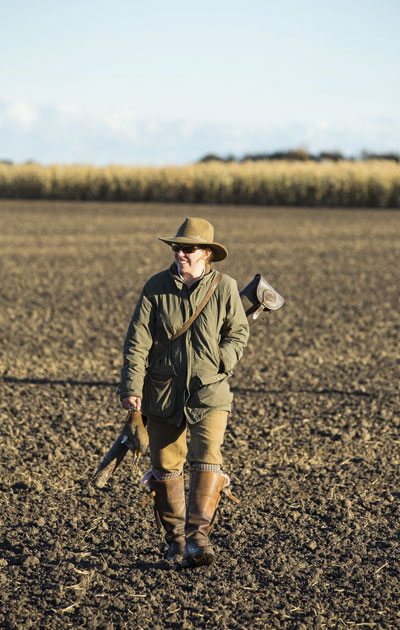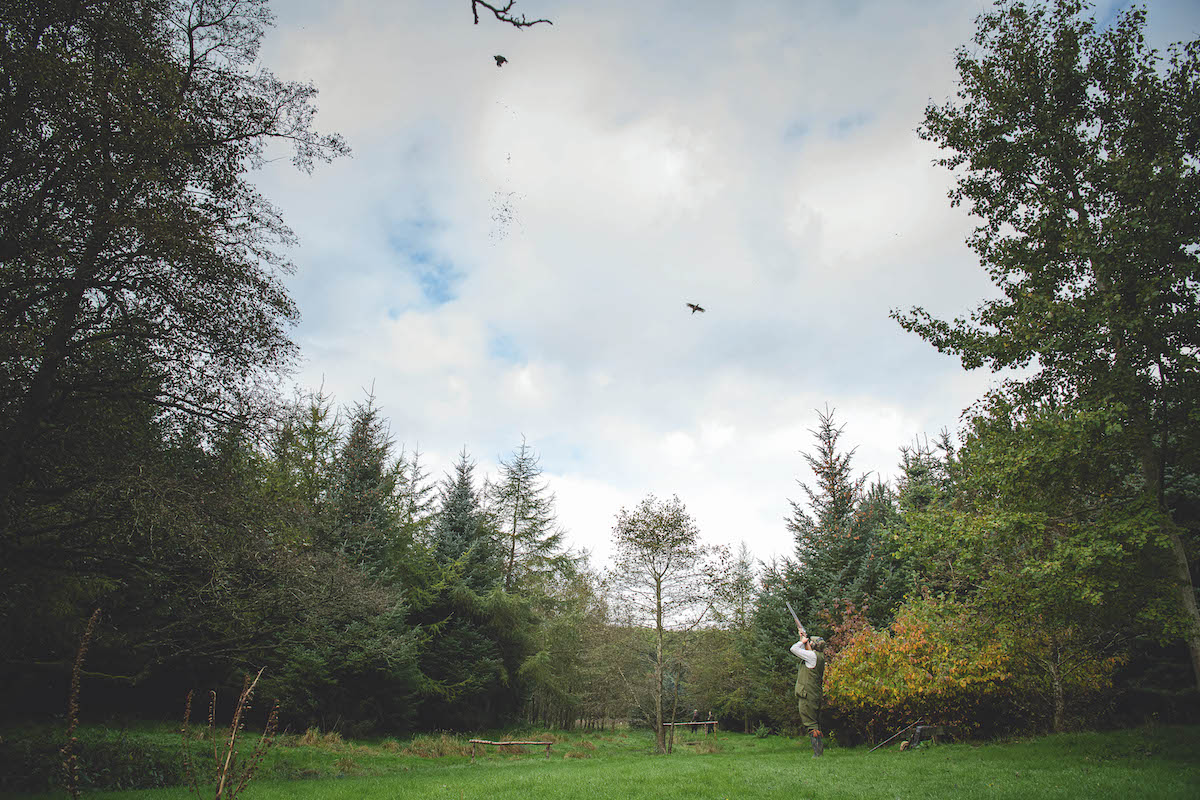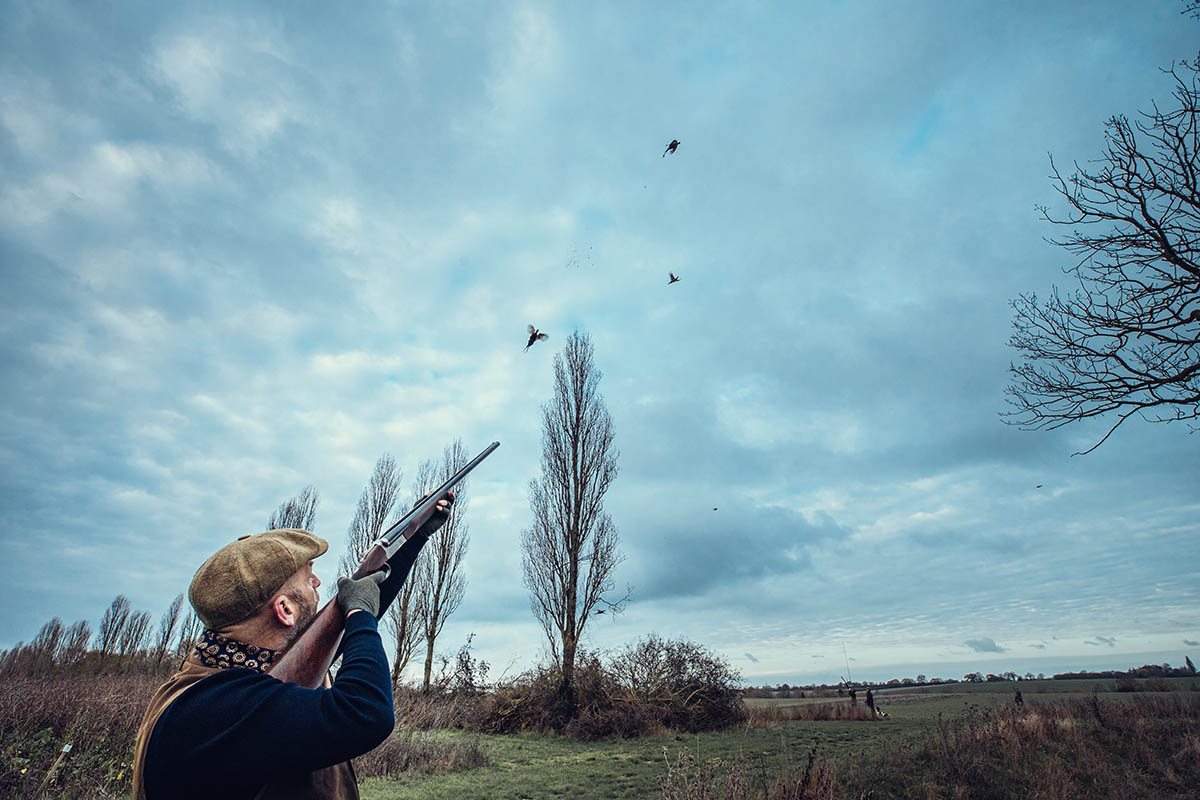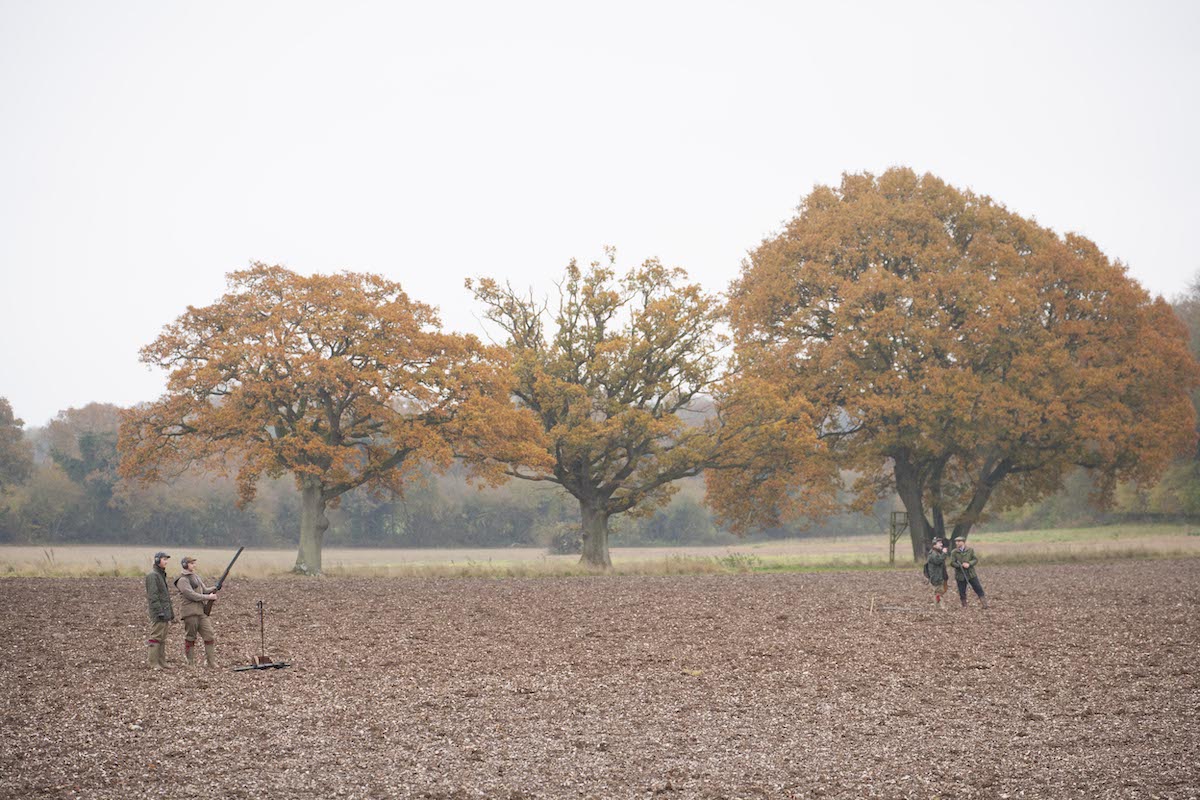Wild game shooting at Vine House Farm shoot, Lincolnshire
Vine House Farm is a wild bird shoot on the south Lincolnshire Fens that has a strong reputation, as Mary Bremner reports.
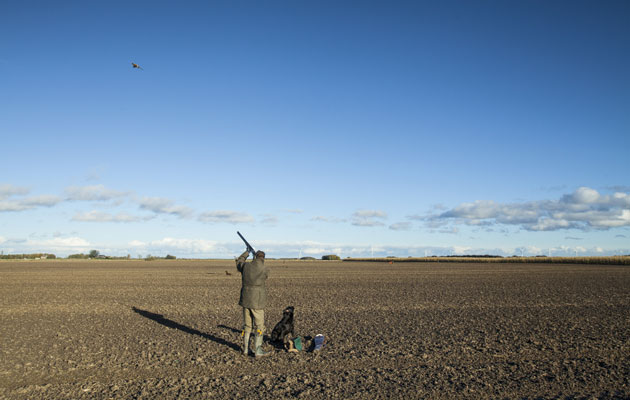
The Lincolnshire Fens bring to mind large tracts of commercial arable farming; acres of flat land planted with nothing but cereal crops and not a tree in sight. So hardly the place for a shoot, let alone a wild-bird one. But this patch in the south Lincolnshire Fens has just that. There’s a nucleus of farms all shooting wild birds, one of them particularly successfully. So successfully that it was runner-up in the Purdey Awards for Game & Conservation in 2002 and again in 2013.
Meet Nicholas Watts from Vine House Farm in Deeping St Nicholas, who owns the farm and the shoot. Nicholas is in many ways a typical Fenland farmer but has more than one string to his bow. He’s a keen ornithologist who loves birds and is out every day counting them on the farm. As he eagerly told me: “This year we have had 13 breeding pairs of barn owls.”

Nicholas Watts is the man whose foresight and enthusiasm have made this wild bird shoot the success it is.
Nicholas started counting the birds on his farm annually in 1982 but over the next 10 years realised the numbers were dropping so he started feeding them, mainly in his yards. The numbers increased dramatically, so he held an open day for people to come and see for themselves. They started asking what he was feeding the birds and wanted to buy some seed. This added another string to Nicholas’s bow – Vine House Farm Bird Seeds – and he now grows more than 400 acres of seed including sunflowers, red and white millet, canary seed, oats, wheat and oilseed rape. In 2006 he was awarded the MBE for his efforts. And he is more than ably assisted by his daughter Lucy, who runs this side of the business.
The secret of success at Vine House Farm
The bird seed was also going to good use on the shoot, being fed to the pheasants, all of which are wild. Nicholas said: “I did all the keepering myself until five years ago. But numbers started dropping as I just didn’t have the time to get around the shoot as we had taken on extra land. So I couldn’t keep on top of the vermin, which was disastrous for the chicks in particular. We had a choice: stop shooting or employ a full-time keeper. We chose the latter and Richard Witt joined us. He was brought up shooting wild pheasants so knew how to deal with them. He’s made a big difference and we now have many more birds on the shoot.”
So what is the secret of a successful wild bird shoot? “Vermin control,” said Richard. “It’s the most important thing with wild birds. Keep on top of vermin so the chicks have a chance to survive. And make sure you feed the birds well to encourage them to stay in their habitat. I always feed the birds in the dark, never in the daytime during the season, to minimise disturbance. If you scare them the birds will disappear and quite possibly never come back.”
As well as good vermin control and extra feed, the farm needs a good supply of natural food, so many of the fields have six-metre margins that encourage insects and provide cover for the birds. These are renewed every couple of years once they become too grassy as the insects start to disappear. The dykes on the farm aren’t cleaned out unless the area is liable to flooding because this again provides cover for the birds and a good environment for the insects.
Time for action at Vine House Farm
We were delighted to join Nicholas and his team of guns on their first shoot of the season in mid November. The shoot covers 2,000 acres and they normally shoot four days, possibly five if numbers are particularly good. Today the plan was to shoot seven or eight drives depending on how things went. There were 12 guns in total – quite a high number for a standard shoot, but with wild birds the guns need to be spread out to shoot in a large U-shape, sometimes even surrounding cover as the birds are very unpredictable. No one is ever quite sure which way they will go! The guns were all friends and family, and some were neighbours with their own wild bird shoots. But all were full of admiration for the way the shoot here is run and the impressive results.
The instructions given to the guns were very specific. Richard said: “You can only shoot two really good hens from each drive and as many cocks as you like. There will be English partridge on each drive, which you can shoot if they present well. Make sure you are very quiet when approaching each drive. No chattering and definitely no slamming of car doors. The birds will be half way across the county otherwise.”
Hot shots on wild birds at Vine House Farm
I joined Annabel Morbey on the first drive, one of two lady guns. The beaters came from a long way off and the birds rose from the cover at all angles. Unlike a drive on a normal shoot, these birds take off and just keep rising. With the flat Fenland and famous big sky as a backdrop, there is something special about wild-bird shooting in this part of the world. Annabel handled her 20-bore side-by-side superbly, taking some demanding birds in style, despite the rain coming down hard at times.
“It’s all about the birds here,” said Annabel, “and it’s a real privilege to shoot wild game. In shooting terms they are very demanding because they are so unpredictable.”
On the next drive I asked Andrew Blois from Suffolk what was so special about this shoot. He replied: “The birds. They are smaller with smaller heads. They fly extremely powerfully and veer off immediately if they see you. I always try to leave a large gap between me and my neighbour so the birds will head for it.”
Two roe deer came out of the cover on this drive and disappeared across the fen. The ground is so flat we were able to watch them for what seemed like miles. It was lovely to see them out in the open for so long. Again, on this drive there were plenty of birds that got up well and used the crosswind to really accelerate towards the line. Not many got through though; these guns certainly knew how to shoot.
Greys on the ground at Vine House Farm
After the next drive we stopped for some welcome sloe gin. Nicholas told me the first pheasant was shot in the 1920s in this part of the Fens, and his family started shooting properly on the farm in the winter of 1938-9 and have been doing so ever since, with a gap for the war. He also spoke about the grey partridge they have on the farm. “The greys are fabulous parents,” he said. “Interestingly both parents help raise the brood, which is why they are so successful. A hen can lay up to 20 eggs. Richard has been very successfully rearing partridge under broody hens and then filtering them out to wild parents who happily adopt them. This has really helped with numbers on the farm. He only does this with the grey partridge. Never with any other bird.”
On the next drive I stood with Tom Abrey from Norfolk. “We have nothing like this where I’m from so it’s very exciting to be shooting wild birds; they just get up and go.” Tom lost his left arm in an accident many years ago, so to aid his shooting he has fitted a device with a magnet on it so he can hold and load and unload his Beretta over-under more easily. It clearly works well as he is an excellent shot.
During this drive an RAF fighter jet passed overhead, adding to the atmosphere. The Fens in this part of the world have an eerie beauty, with enormous skies and changing weather that you can see coming from a long way out. The wind picked up as the day continued but luckily not too much as these Fen winds can almost cut you in two.
A credit to the keeper at Vine House Farm
After lunch there were a couple more drives. Pete Maclaren had driven eight hours from his home in the Highlands of Scotland to join the shoot. He had been a student at the RAU in Cirencester with Lucy, Annabel and Sam Taylor so there was something of a reunion feel to the day. “I wouldn’t miss this shoot for the world,” said Pete. “I’m lucky to have been invited for the last few years and there’s nothing quite like it.” Like the other guns, his shooting was impressive.
The final drive took place under the wind turbines that dominate the skyline. Nicholas Watts is quite a pioneer for this renewable energy source in the area. Whilst waiting for the beaters to do their job, a flock of pigeons flew out of the cover and it was lovely to see two barn owls take flight, along with a number of hares hurtling off into the distance.
The birds in the afternoon were not so prolific or enthusiastic in their flight as those in the morning, but this was not surprising as the sun was bright and the conditions weren’t ideal. The total bag at the end of the day was 171 – a credit to Richard Witt and his successful keepering and excellent beating team at Vine House Farm. And of course to Nicholas Watts and his vision of feeding wild birds all those years back.

